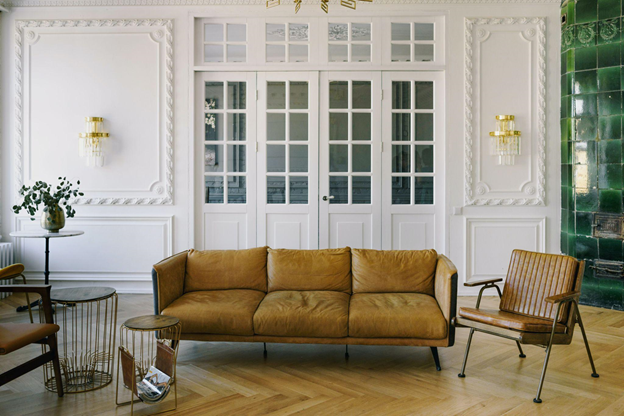Common Mistakes to Avoid When Purchasing a Sofa

When it comes to purchasing a sofa, there are a few common blunders to avoid. Unfortunately, because these are minor details, they are readily overlooked. However, all of the couch-buying errors detailed here will have a significant impact on your overall pleasure with your sofa purchase.
Purchasing an Oversized or Undersized Sofa
This is maybe the most common blunder of all. This occurs when you fail to measure your space or the sofa or when both are neglected. Don’t judge a sofa’s size by its appearance in the store. A modern 3-seater sofa at a showroom may appear tiny, but it could end up being too big for your room or not fit through doorways. Thus not measuring your area or your sofa can lead to a slew of issues.
Pay attention to the scale in addition to measuring the size of your room. For example, your sofa should be the same scale as the rest of your furniture, so it doesn’t appear excessively enormous or too little in comparison.
Purchasing a Sofa Without First Testing It
Your sofa should not be too huge or too little for you, just as it should not be too big or small for your room. Make sure the seat is deep enough and comfortably sit if you are tall. If you are short or have terrible knees, look for a shallow seat that allows you to get out of it easily.
If at all possible, check out a sofa before purchasing it. Sit on it, lie down on it, and utilize it as you would at home. If you want to nap on your sofa, ensure sure the arms are at a comfortable height. Ascertain that the cushions and back are as soft or firm as you want.
Choosing the Wrong Sofa Style
The style of your sofa should match the rest of your furnishings. It should be one that you feel at ease with, not only in terms of appearance but also how that particular style works for you. Try out the sofa to see how it works, but pay close attention to the design to avoid buying anything that will look out of place in your home.
Each home has a distinct style, and if you buy a sofa that doesn’t match it, it could be a significant eyesore unless you’re an expert at mixing and matching styles. If you want to be secure, consider how your sofa will look when arranged with the rest of your furniture.
Picking the Wrong Color or Fabric for Your Sofa
Selecting the wrong fabric for your sofa might be a pricey mistake. Instead, fabric selection should be based on using and placing the sofa. For example, suppose you’re buying a sofa for a heavily utilized part of your home. In that case, a delicate fabric or color will be ruined before you’ve even had a chance to appreciate it.
Making a mistake with the color of your fabric is likewise a big no-no. However, bringing a swatch home to consider with your other furnishings, wall color, and lighting is always a good idea.
Always choose a color that you like and can live with. You should not select colors solely on fads or whims. You’ll have to live with that color decision for a long time.
Purchasing a Low-Quality Sofa
To be sure, there are always price issues, but investing in a high-quality sofa assures that you won’t have to replace it in a few years.
Investing in a high-quality sofa pays off in the long run. Purchase the highest quality sofa you can afford, as a low-grade sofa will lose its form, appearance, and comfort factor fast, often in a matter of months. In addition, a poor-quality frame might potentially shatter, resulting in jiggling arms and unsteady legs.
When looking for a quality sofa, consider three things: the frame, seating support, and filler. Here are some tips to remember when looking for a quality sofa:
- The structure decides how long a sofa will last and how well it will retain its shape. A sturdy, long-lasting frame is always present in a high-quality sofa. Kiln-dried hardwood is the best option. The kiln-drying process removes all moisture from the wood, allowing it to maintain its shape and stability for an extended period. As the green wood dries, it may shrink or crack. Softwood bends and breaks easily, whereas knotted wood cracks easily. Also, pay attention to its joints; a high-quality frame pays careful attention to the joints. They’re held together with glue, screws, and dowels. Corners have also been reinforced with reinforcing blocks to provide additional support and strength.
- Seating support. Seating support works in tandem with the frame and the filling. A sturdy frame, augmented by infill, is the foundation for strong sitting support. Always sit on a sofa before purchasing it to inspect the quality of the seating support. It should not sag and should provide sufficient back and seat support. Check if it uses an 8-way hand-tied spring system when looking for a sofa. The craftsman uses thick yarn to link each spring to the one next to it. Each spring is firmly tied from front to back, side to side, and diagonally in both directions by the twine.
- High-density polyurethane is the most common filler. The firmer the cushion, the higher the density. It can be wrapped in a softer material like cotton to make foam softer. The cheapest option is Dacron-wrapped foam, but it won’t last as long. Make sure you get high-density foam because the low-density foam will sag and cause the fabric to lose its tautness. If you want a super-soft seat, consider down cushions. These are the top-of-the-line solutions, and they are, as you might guess, the most expensive. High-quality cushions have a down-proof ticking under the upholstery fabric to keep the feathers from clinging to the material. On the other hand, down-only cushions are high-maintenance and require regular maintenance.
Photo by Ksenia Chernaya from Pexels




